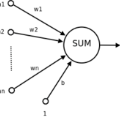Developments in machine learning interpretability techniques over the past decade have provided new tools to observe the image regions that are most informative for classification and localization in artificial neural networks (ANNs). Are the same regions similarly informative to human observers? Using data from 78 new experiments and 6,610 participants, we show that passive attention techniques reveal a significant overlap with human visual selectivity estimates derived from 6 distinct behavioral tasks including visual discrimination, spatial localization, recognizability, free-viewing, cued-object search, and saliency search fixations. We find that input visualizations derived from relatively simple ANN architectures probed using guided backpropagation methods are the best predictors of a shared component in the joint variability of the human measures. We validate these correlational results with causal manipulations using recognition experiments. We show that images masked with ANN attention maps were easier for humans to classify than control masks in a speeded recognition experiment. Similarly, we find that recognition performance in the same ANN models was likewise influenced by masking input images using human visual selectivity maps. This work contributes a new approach to evaluating the biological and psychological validity of leading ANNs as models of human vision: by examining their similarities and differences in terms of their visual selectivity to the information contained in images.
翻译:在过去十年里,机器学习解释技术的发展为观察在人工神经网络中分类和定位方面信息最丰富的图像区域提供了新的工具。同样的区域是否与人类观察者有类似的信息?利用78个新实验和6 610名参与者的数据,我们表明,被动关注技术显示与人类视觉选择性估算有很大重叠,这些估算来自6项不同的行为任务,包括视觉歧视、空间定位、可识别性、自由观看、倾角搜索和显著的搜索固定。我们发现,使用引导反对映方法探测的相对简单的ANNE结构产生的输入可视化是人类测量措施共同变异中一个共同组成部分的最佳预测器。我们利用认知实验,用因果关系操纵来验证这些相关结果。我们表明,在快速识别实验中,用ANNE的注意地图遮盖的图像比控制面具更容易进行分类。同样,我们发现同一ANNE模型的认知性表现同样受到使用人类视觉选择性地图遮掩输入图像的影响。这项工作有助于以新的方法评价导致ANNE图像具有的视觉差异的模型的生物和心理有效性。





